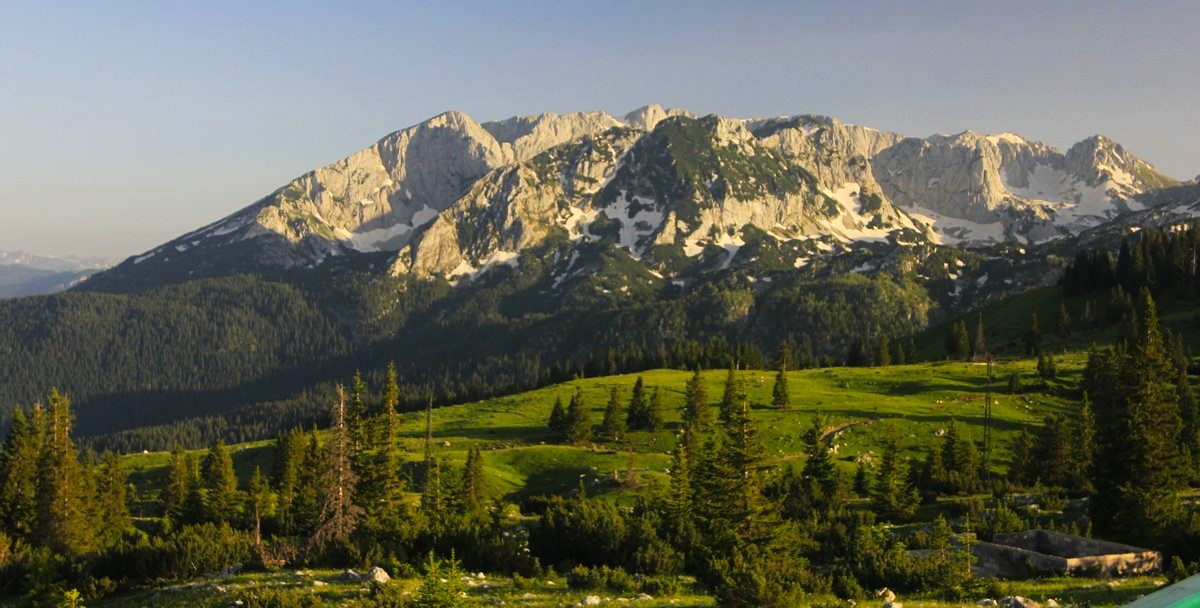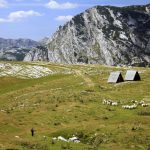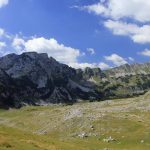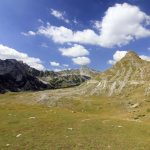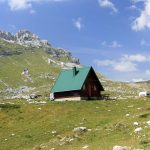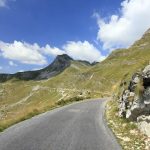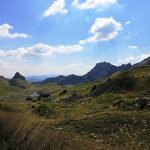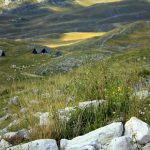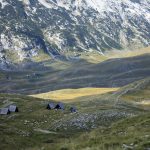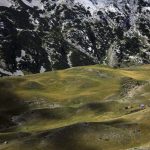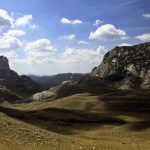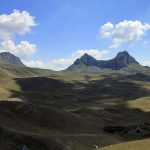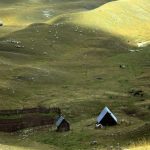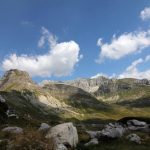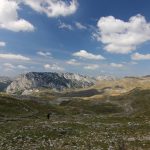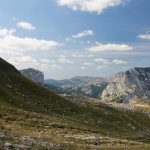Durmitor – mountain range & national park in Montenegro
Durmitor is a dramatic mountain massif and a national park in north-western Montenegro, crowned by its highest peak Bobotov Kuk (2,523 m). The name is believed to derive from the Celtic words “dru mi tore”—meaning “mountain full of water.” Thanks to its rare beauty and pristine nature, the area was proclaimed a National Park in 1952.
Extent & landscape
Durmitor National Park encompasses the central Durmitor massif together with the canyons of the Tara, Draga and Sušica rivers, plus the upper canyon valley of the Komarnica—a total of about 39,000 ha. The hallmark of the relief is a broad plateau around 1,500 m a.s.l., carved by deep canyons and crowned by imposing summits—48 peaks above 2,000 m, led by Bobotov Kuk.
Glacial lakes – the “eyes of Durmitor”
The massif is dotted with 18 glacial lakes above 1,500 m known as the “mountain eyes.” The largest and best-known is Black Lake, just 2 km from Žabljak. Its mirror-calm, dark-green waters, old-growth conifer forest and the looming Međed peak create one of Durmitor’s signature vistas.
Tara Canyon – a world-class wonder
The Tara River, Montenegro’s longest (≈150 km), carves a canyon up to 1,000–1,300 m deep—among the deepest in Europe. Within the park the average river gradient is about 3.6 m/km, forming gorgeous rapids and chutes ideal for Tara rafting and wilderness photography.
Nature – flora, fauna & ecosystems
Durmitor shelters exceptional biodiversity, with over 1,300 vascular plant species, including many endemic and relict taxa. From conifer forests and alpine meadows to bare high-alpine ridges, the park’s mosaic of habitats is a constant inspiration for naturalists and nature lovers.
Culture & heritage
The park area holds cultural monuments from antiquity to the modern era. Medieval heritage is especially prominent—ruins of fortresses, bridges and watch posts, necropolises and monastic sites along the Tara Valley—layering human history onto an already majestic natural setting.
UNESCO recognition
- Durmitor National Park has been on the UNESCO World Heritage List since 1980 (natural heritage).
- The Tara River and its canyon have been part of UNESCO’s Man and the Biosphere programme since 1977 as a biosphere reserve.
Ways to experience Durmitor
- Hiking & summits: marked trails to viewpoints and 2,000-m peaks, including Bobotov Kuk.
- Lake loops: walks around Black, Zminje, Vražje and Riblje Lakes.
- Whitewater: Tara River rafting and guided kayak support.
- Zip-line: a flight over the Tara with panoramas of the Đurđevića Tara Bridge.
- MTB, jeep tours, paragliding: adrenaline programs across plateaus and passes.
Your base – Eco Camp KLJAJEVIĆA LUKA
Explore Durmitor from Eco Camp KLJAJEVIĆA LUKA beneath the Đurđevića Tara Bridge—5 ha of nature with rooms, bungalows and a parcelled motorhome/camping area (power hook-ups and a sanitary block with showers & bathrooms). Mix activities with ease: trails in the morning, zip-line or rafting in the afternoon, dinner at the camp restaurant.
Practical tips
- When to come: year-round. Summer and early autumn are ideal for peaks and lakes; spring for rafting; winter for snow-covered scenery.
- Gear: layered clothing, hiking footwear, sun/wind protection; use licensed guides for technical routes and river trips.
- Park etiquette: stay on marked trails and follow conservation rules.
Durmitor blends grand mountain landscapes, the wild water of the Tara and rich cultural layers under UNESCO protection. Plan your stay, pick your adventures and experience this truly “mountain full of water” at its finest.
